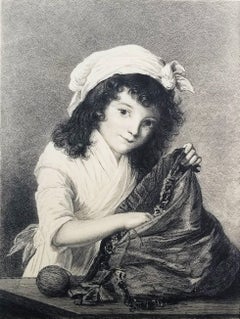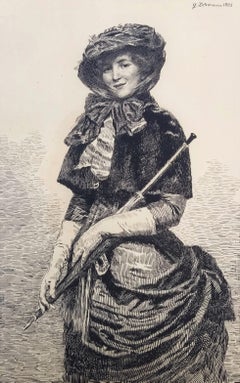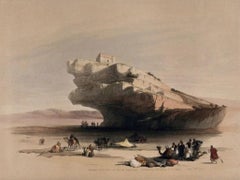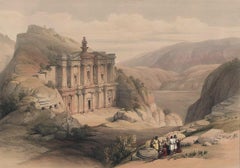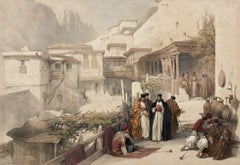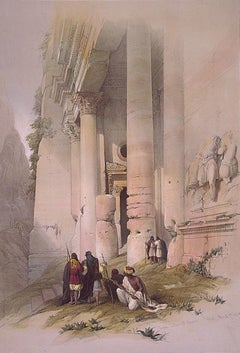Victorian Prints and Multiples
to
50
390
87
17
3
5
Overall Width
to
Overall Height
to
21,245
18,657
10,632
6,304
5,059
2,714
1,554
1,398
1,327
882
848
438
346
202
27
25
21
16
11
25
313
161
3
8
1
1
1
1
25
289
212
1
187
104
89
85
61
46
36
32
31
28
27
26
25
25
15
14
14
13
13
13
334
99
87
77
46
43
24
124
63
Style: Victorian
Melle Brongniart, Baronne Pichon (Miss Brongniart, Baroness Pichon) /// Antique
Located in Saint Augustine, FL
Artist: Eugène Marie Louis Chiquet (French, 1863-1942)
Title: "Melle Brongniart, Baronne Pichon (Miss Brongniart, Baroness Pichon)"
Portfolio: Gazette des Beaux-Arts
Year: 1901
Mediu...
Category
Early 1900s Victorian Prints and Multiples
Materials
Etching, Intaglio
Portrait de Mlle L... (Portrait of Miss L...) /// Old Masters Figurative Lady
Located in Saint Augustine, FL
Artist: Paul Rodolphe Joseph Dujardin (French, 1843-1913)
Title: "Portrait de Mlle L... (Portrait of Miss L...)"
Portfolio: Gazette des Beaux-Arts
*Signed by Dujardin after Lehmann i...
Category
1890s Victorian Prints and Multiples
Materials
Etching, Laid Paper, Intaglio
Ancient Watch Tower
Located in London, GB
David Roberts RA
Ancient Watch Tower
1796 - 1864
Subscription and first edition lithograph in stock
Half plate: 93
Presented in a acid free mount
Category
19th Century Victorian Prints and Multiples
Materials
Lithograph
El Deir, Petra
Located in London, GB
Available in the First Edition lithograph
Full plate: 90
Presented in a acid free mount
We only sell the original 19th century lithographs by David Roberts, please read the informa...
Category
19th Century Victorian Prints and Multiples
Materials
Lithograph
Principal Court of the Convent of St. Catherine
Located in London, GB
First Edition lithograph
Full plate: 120
Presented in a acid free mount
Category
19th Century Victorian Prints and Multiples
Materials
Lithograph
Lower Portion of El Khasne, Petra
Located in London, GB
Subscription and first edition lithograph in stock
Full plate: 94
Presented in a acid free mount
Category
19th Century Victorian Prints and Multiples
Materials
Lithograph
'Birchbark Sap Buckets and Yoke' original halftone print, Bureau of Ethnology
Located in Milwaukee, WI
This halftone print was included in the 1898 report of the Bureau of Ethnology to the Smithsonain Institution. The sap buckets and yoke are from the Menomin...
Category
1890s Victorian Prints and Multiples
Materials
Lithograph
20th century lithograph realism figurative female print female subject signed
Located in Milwaukee, WI
"Woman Manicuring Her Nails" is an original lithograph by Maximilien Luce. The artist signed the piece lower right and it is numbered (#7). It features a woman seated in an interior taking care of her nails.
8 1/4" x 5 3/4" image
14 1/8" x 10 3/4" paper
19 1/4" x 16 1/2" frame
Maximilien Luce (1858 – 1941) was a prolific French Neo-impressionist artist, known for his paintings, illustrations, engravings, and graphic art, and also for his anarchist activism. Starting as an engraver, he then concentrated on painting, first as an Impressionist, then as a Pointillist, and finally returning to Impressionism.
Gausson and Cavallo-Péduzzi introduced Luce in about 1884 to the Divisionist technique developed by Georges Seurat. This influenced Luce to begin painting in the Pointillist style. In contrast to Seurat's detached manner, Luce's paintings were passionate portrayals of contemporary subjects, depicting the "violent effects of light". In addition to Pissarro and Signac, he met many of the other Neo-impressionists, including Seurat, Henri-Edmond Cross, Charles Angrand, Armand Guillaumin, Hippolyte Petitjean, Albert Dubois...
Category
Early 1900s Victorian Prints and Multiples
Materials
Lithograph
Front Elevation of The Great Temple of Aboo Simbel
Located in London, GB
Front Elevation of The Great Temple of Aboo Simbel
First edition lithograph
Full plate: 169
Presented in a acid free mount
£2,600
Scroll down for more information.
Roberts reached A...
Category
19th Century Victorian Prints and Multiples
Materials
Lithograph
19th Century Botanical Engraving of Chirita Walkeria. Hand-Colored Print by Gar
Located in Jacksonville, FL
A captivating 19th-century botanical engraving depicting Chirita walkeria, a delicate flowering plant named in honor of Anna Maria Walker, a noted naturalist. This hand-colored print...
Category
Early 19th Century Victorian Prints and Multiples
Materials
Engraving
"Birthplace of Henry Clay, Hanover County, VA, " Lithograph by Kelloggs & Thayer
Located in Milwaukee, WI
"Birthplace of Henry Clay, Hanover County, Virginia" is an original hand-colored lithograph by Kelloggs & Thayer. The piece features a homestead and farm anima...
Category
1870s Victorian Prints and Multiples
Materials
Lithograph
Minaret & Grand Entrance of the Metwaleys, Cairo
Located in London, GB
Subscription and first edition lithograph in stock
Full plate: 218
Presented in an acid free mount
Category
19th Century Victorian Prints and Multiples
Materials
Lithograph
1877 Engraving – “The Little Gleaner” by C. Klackner, New York
Located in Jacksonville, FL
A charming 19th-century engraving titled “The Little Gleaner”, published in 1877 by C. Klackner in New York. The piece depicts a young girl walking through a wheat field, holding a b...
Category
1870s Victorian Prints and Multiples
Materials
Engraving
Baalbec, General View
Located in London, GB
Subscription and first Edition lithographs
Full plate: 77
Presented in an acid free mount
Original hand coloured subscription edition and modern hand-coloured lithograph for the fir...
Category
19th Century Victorian Prints and Multiples
Materials
Lithograph
Pair of 19th Century Framed Botanical Prints Hooker & Gardner
Located in Jacksonville, FL
A stunning pair of original 19th-century hand-colored botanical engravings featuring Ipomoea horsfalliae and Chirita walkeria, attributed to renowned British botanists William Jackso...
Category
1830s Victorian Prints and Multiples
Materials
Engraving
Gaillard, Lecomte, and Cie - Parisian Fashion Trade Hand Painted Catalogue Print
Located in Jacksonville, FL
Transport yourself to the elegance of Victorian French fashion with this vintage lithograph print featuring exquisite ladies' La Mode dresses. The unframed size of the print measures...
Category
Early 20th Century Victorian Prints and Multiples
Materials
Paper
$4,400 Sale Price
20% Off
19th Century Botanical Engraving “Ipomoea Horsfalliae” by W. J. Hooker. Framed
Located in Jacksonville, FL
A striking 19th-century botanical engraving depicting Ipomoea horsfalliae, also known as Lady Doorly’s Morning Glory. This exquisite floral illustration is attributed to the renowned...
Category
1830s Victorian Prints and Multiples
Materials
Engraving
Remains of the Triumphal Arch, Petra
Located in London, GB
David Roberts RA
Remains of the Triumphal Arch, Petra
1796 - 1864
Subscription and First Edition lithographs
Full plate: 100
Presented in a acid free mount
Category
19th Century Victorian Prints and Multiples
Materials
Lithograph
General View Asouan & The Island of Elephantine
Located in London, GB
Subscription and first edition lithographs in stock
Full plate: 196
Presented in a acid free mount
Category
19th Century Victorian Prints and Multiples
Materials
Lithograph
General View of the Island of Philae, Nubia
Located in London, GB
General View of the Island of Philae, Nubia
Subscription and first edition lithographs in stock
Full plate: 151
Presented in a acid free mount
£2080
Scroll down for more information....
Category
19th Century Victorian Prints and Multiples
Materials
Lithograph
Convent of St. Catherine, Mt. Horeb
Located in London, GB
First edition lithographs in stock
Full plate: 118
Presented in a acid free mount
Category
19th Century Victorian Prints and Multiples
Materials
Lithograph
Large Victorian French La Mode Lithograph Print
Located in Jacksonville, FL
Transport yourself to the elegance of Victorian French fashion with this vintage lithograph print featuring exquisite ladies' La Mode dresses. The unframed siz...
Category
19th Century Victorian Prints and Multiples
Materials
Paper
$4,400 Sale Price
20% Off
Victorian prints and multiples for sale on 1stDibs.
Find a wide variety of authentic Victorian prints and multiples available for sale on 1stDibs. Works in this style were very popular during the 21st Century and Contemporary, but contemporary artists have continued to produce works inspired by this movement. If you’re looking to add prints and multiples created in this style to introduce contrast in an otherwise neutral space in your home, the works available on 1stDibs include elements of blue, purple and other colors. Many Pop art paintings were created by popular artists on 1stDibs, including Sir Leslie Ward, John James Audubon, George Cruikshank, and Philippe Benoist. Frequently made by artists working with Lithograph, and Engraving and other materials, all of these pieces for sale are unique and have attracted attention over the years. Not every interior allows for large Victorian prints and multiples, so small editions measuring 4.34 inches across are also available. Prices for prints and multiples made by famous or emerging artists can differ depending on medium, time period and other attributes. On 1stDibs, the price for these items starts at $65 and tops out at $30,458, while the average work sells for $173.
Recently Viewed
View AllMore Ways To Browse
Andy Warhol Coke
Andy Warhol Fish
Andy Warhol Flowers Poster
Andy Warhol Movie Poster
Architecture Prints Georgian
Bearbrick Pink
Dali Milky Way
Frank Romero On Sale
Gilles Aillaud
Gregory Colbert
Gretchen Dow Simpson
Gwenda Morgan
Jean Cocteau 1957
Jim Webb
Kaws Set 2 Clean Slate
Ken Rush
Lebanon Poster
Lebanon Vintage Poster
